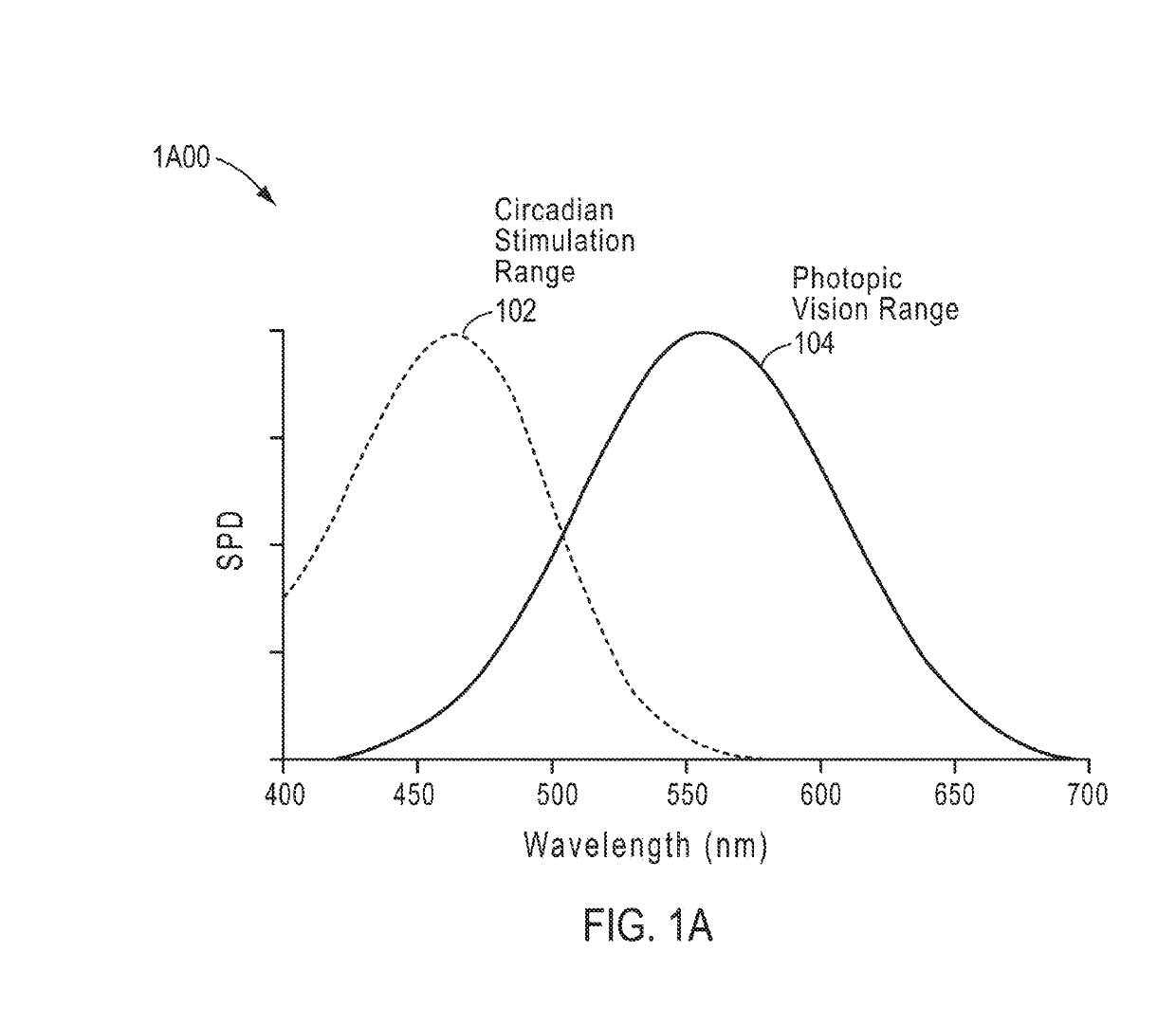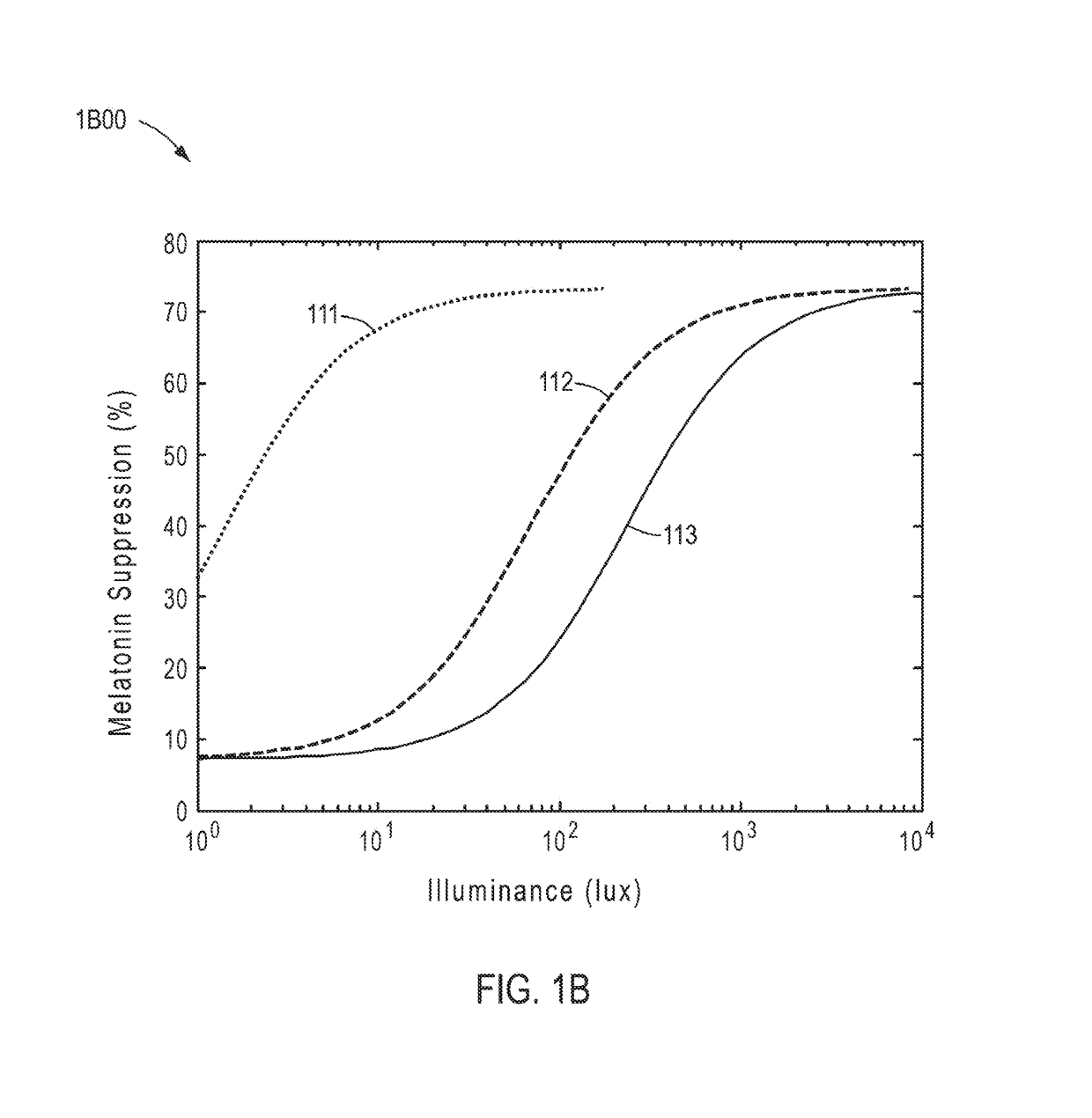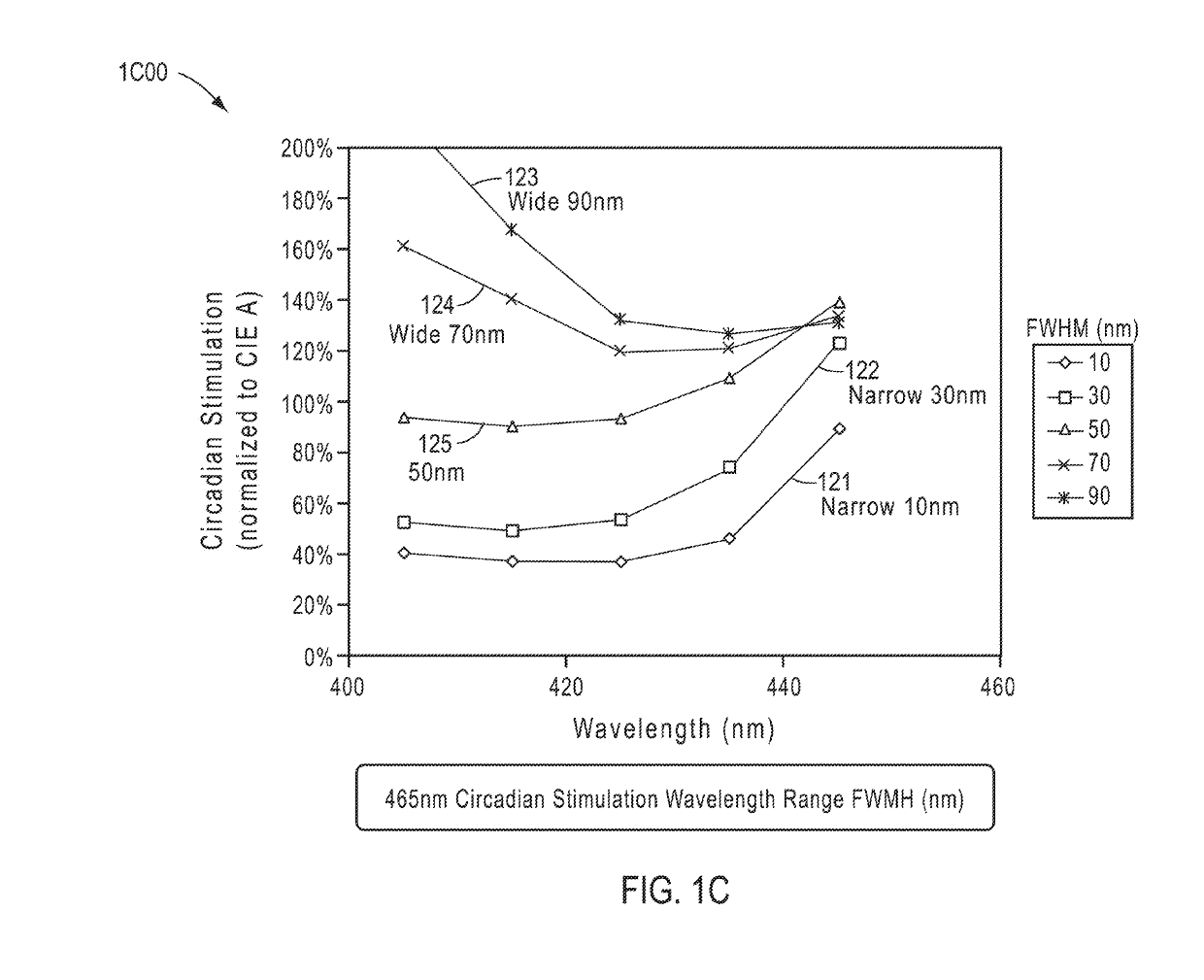Circadian-friendly LED light source
a led light source and led light source technology, applied in the field of illumination products, can solve the problems of legacy illumination products that fail to address the impact of diurnal or circadian cycles on humans, and the illumination products are rarely tunable, and achieve the effects of reducing light levels, reducing energy consumption, and high blue conten
- Summary
- Abstract
- Description
- Claims
- Application Information
AI Technical Summary
Benefits of technology
Problems solved by technology
Method used
Image
Examples
Embodiment Construction
[0057]Reference is now made in detail to certain embodiments. The disclosed embodiments are not intended to be limiting of the claims.
[0058]Non-visual photoreceptors in the human eye (so-called intrinsically photosensitive retinal ganglion cells) are linked to the circadian system. While details of the circadian excitation band continue to evolve, a common consensus is that it the excitation band is peaked in the blue range at around 465 nm.
[0059]FIG. 1A is a diagram 1A00 showing a circadian stimulation wavelength range (CSWR) 102 as used to tune a circadian-friendly LED light source as presented by Brainard et al. in The Journal of Neuroscience, Aug. 15, 2001, 21(16):6405-6412 (Brainard), compared to the photopic vision range 104. With such a broad effective action spectrum, it appears there is little one can do to vary circadian stimulation for a white light source, other than varying the relative short-wavelength content, that is, the CCT. However, more recent work suggests that ...
PUM
 Login to View More
Login to View More Abstract
Description
Claims
Application Information
 Login to View More
Login to View More - R&D
- Intellectual Property
- Life Sciences
- Materials
- Tech Scout
- Unparalleled Data Quality
- Higher Quality Content
- 60% Fewer Hallucinations
Browse by: Latest US Patents, China's latest patents, Technical Efficacy Thesaurus, Application Domain, Technology Topic, Popular Technical Reports.
© 2025 PatSnap. All rights reserved.Legal|Privacy policy|Modern Slavery Act Transparency Statement|Sitemap|About US| Contact US: help@patsnap.com



